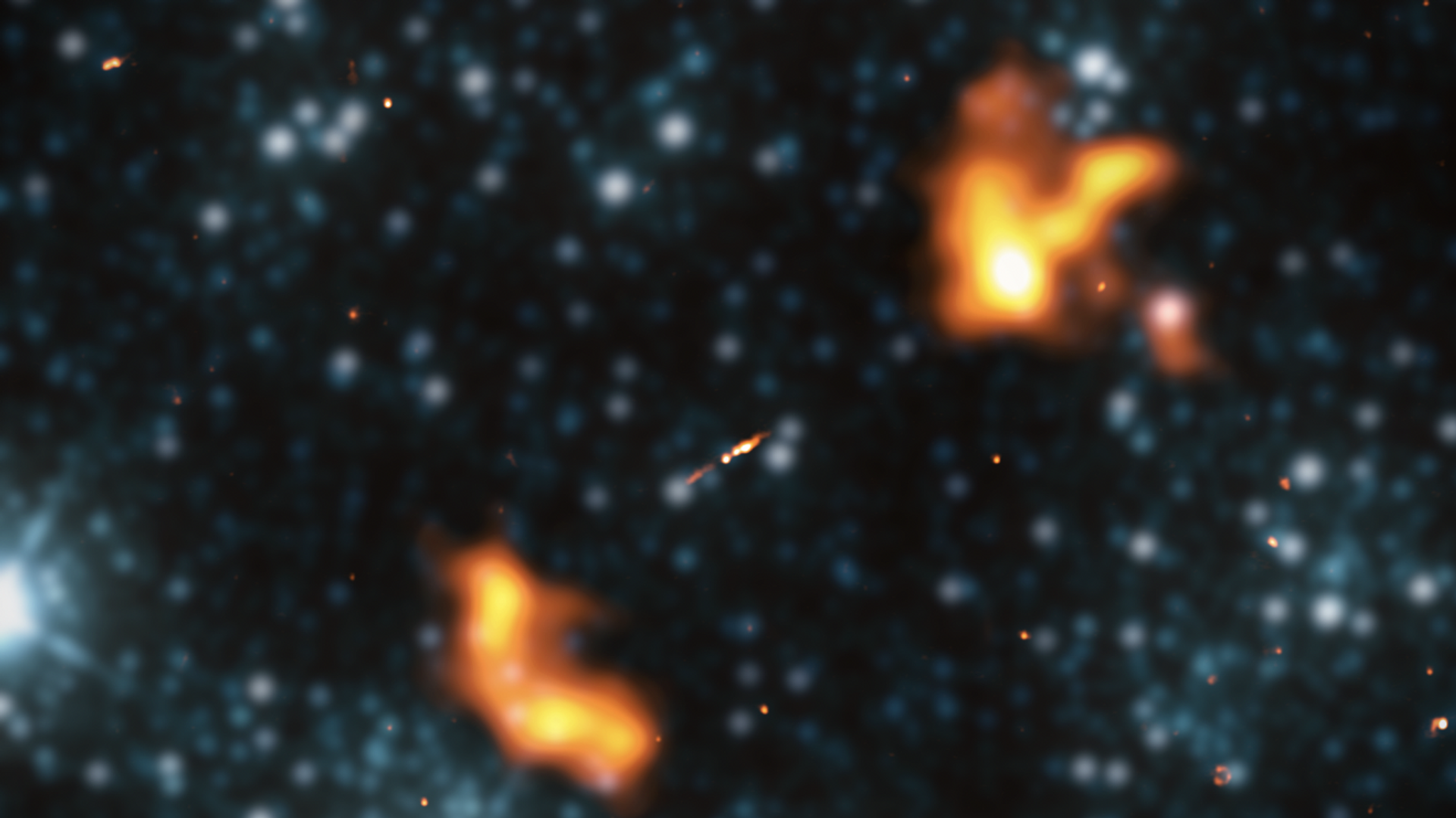https://sputnikglobe.com/20220219/discovery-of-largest-galaxy-yet-observed-baffles-astronomers--1093187542.html
Discovery of Largest Galaxy Yet Observed Baffles Astronomers
Discovery of Largest Galaxy Yet Observed Baffles Astronomers
Sputnik International
Astronomers in Europe have discovered the largest galaxy ever observed. Alcyoneus, named after a Greek giant slain by Heracles, is a radio galaxy some 16.3... 19.02.2022, Sputnik International
2022-02-19T22:14+0000
2022-02-19T22:14+0000
2022-08-06T13:32+0000
black hole
giant radio galaxy
science & tech
https://cdn1.img.sputnikglobe.com/img/07e6/02/13/1093187517_0:249:1319:990_1920x0_80_0_0_bb4b887b4aaafbe56ffbcabc358c6efa.png
Using the pan-European LOFAR telescope, astronomers captured the radio light that the black hole at the center of Alcyoneus emits. The massive plume of radio energy gives the radio galaxy its astronomical description.A radio galaxy features a black hole at its center that shoots material into space at near light speed. The speed creates so much heat that stardust dissolves into plasma and creates an observable glow, the radio light.The discovery of Alcyoneus has raised new questions on how galaxies expand. According to the team of astronomers, Alcyoneus is, outside of its massive size, relatively mundane.The discovery of a massive galaxy with “ordinary” characteristics has left astronomers to speculate and continue their research. One theory is that Alcyoneus is surrounded by a low-density environment. Another is that it exists within a filament of the cosmic web.While questions surrounding Alcyoneus will continue to be investigated, the discovery has given astronomers new insights into the universe.
Sputnik International
feedback@sputniknews.com
+74956456601
MIA „Rossiya Segodnya“
2022
News
en_EN
Sputnik International
feedback@sputniknews.com
+74956456601
MIA „Rossiya Segodnya“
Sputnik International
feedback@sputniknews.com
+74956456601
MIA „Rossiya Segodnya“
black hole, giant radio galaxy, science & tech
black hole, giant radio galaxy, science & tech
Discovery of Largest Galaxy Yet Observed Baffles Astronomers
22:14 GMT 19.02.2022 (Updated: 13:32 GMT 06.08.2022) Astronomers in Europe have discovered the largest galaxy ever observed. Alcyoneus, named after a Greek giant slain by Heracles, is a radio galaxy some 16.3 million light-years wide, making it over four times the size of the previous record-holder, IC 1101, with a 3.9 million light-year diameter.
Using the pan-European LOFAR telescope, astronomers captured the radio light that the black hole at the center of Alcyoneus emits. The massive plume of radio energy gives the radio galaxy its astronomical description.
A radio galaxy features a black hole at its center that shoots material into space at near light speed. The speed creates so much heat that stardust dissolves into plasma and creates an observable glow, the radio light.
The discovery of Alcyoneus has raised new questions on how galaxies expand. According to the team of astronomers, Alcyoneus is, outside of its massive size, relatively mundane.
"Beyond geometry, Alcyoneus and its host are suspiciously ordinary: the total low-frequency luminosity density, stellar mass and supermassive black hole mass are all lower than, though similar to, those of the medial giant radio galaxies,"
the researchers wrote.
The discovery of a massive galaxy with “ordinary” characteristics has left astronomers to speculate and continue their research. One theory is that Alcyoneus is surrounded by a low-density environment. Another is that it exists within a filament of the cosmic web.
While questions surrounding Alcyoneus will continue to be investigated, the discovery has given astronomers new insights into the universe.
The researchers note that “very massive galaxies or central black holes are not necessary to grow large giants, and, if the observed state is representative of the source over its lifetime, neither is high radio power."

